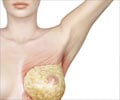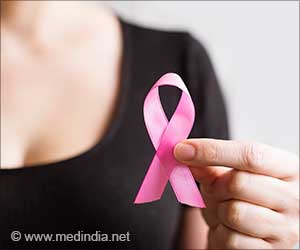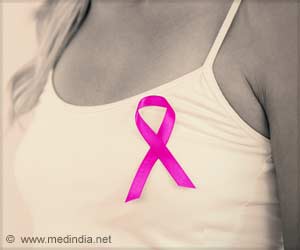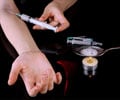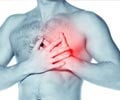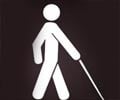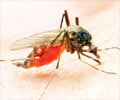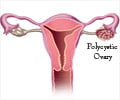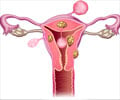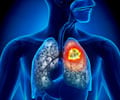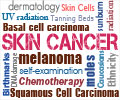Breast cancer is a kind of cancer that develops from breast cells. Breast cancer usually spreads from milk ducts or the lobules that supply them with milk. A malignant tumor can spread to other parts of the body. There are two types of breast cancer: lobular carcinoma and ductal carcinoma .
Advertisement
Facts about Breast Cancer
- The American Society's breast cancer predictions for 2023 are that there will be 297,790 new cases of invasive breast cancer in women (2✔ ✔Trusted Source
Cancer statistics, 2023
Go to source). - Breast cancer is the most common type of cancer among all women. It is the second leading cause of cancer death in women after lung Cancer (3✔ ✔Trusted Source
Breast Cancer
Go to source). - Breast cancer spreads to the bones, liver and lungs when it spreads beyond the breast (4✔ ✔Trusted Source
Breast cancer : Medlineplus
Go to source). - African American women are more likely to die from breast cancer than white women (5✔ ✔Trusted Source
Breast Cancer Statistics
Go to source). - Currently, about 1 in 3,000 pregnant or lactating women has breast cancer. Researchers say that once a woman has been diagnosed with breast cancer during pregnancy, her chances of survival are lower than those of a non-pregnant woman with breast cancer (6✔ ✔Trusted Source
Breast cancer in lactating mothers: A case series of delayed diagnosis
Go to source). - Breast cancer in men is rare. US records about 1% of male breast cancer every year (7✔ ✔Trusted Source
Breast Cancer in Men
Go to source). Approximately 530 men die of breast cancer each year. African American men are more likely to die from male breast cancer than white men. - In 2020, 685 000 people worldwide died, and 2.3 million women were diagnosed with breast cancer (8✔ ✔Trusted Source
Breast cancer - World Health Organization
Go to source).
Advertisement
- Since January 1, 2022, about 4.1 million American women have had a history of breast cancer (9✔ ✔Trusted Source
Breast Cancer Statistics, 2022
Go to source). - The risk for breast cancer increases with age. Nearly 7% of women with breast cancer are diagnosed before the age of 40 years (10✔ ✔Trusted Source
Breast Cancer Before Age 40 Years
Go to source). - Tumors are more likely to be malignant when they are firm and have irregular shapes (1✔ ✔Trusted Source
What Is Breast Cancer?
Go to source). So it is important to see a doctor when any lump is found in the breast. - Lactating has consistently been shown to reduce breast cancer risk by 4.3% - the greater the duration, the greater the benefit (12✔ ✔Trusted Source
Breastfeeding reduces the risk of breast cancer: A call for action in high-income countries with low rates of breastfeeding
Go to source). - Women with high breast density were found to have a one- to six-fold increased risk of breast cancer when compared to women with lower breast density (13✔ ✔Trusted Source
Mammographic breast density and the risk of breast cancer: A systematic review and meta-analysis
Go to source). - Research has found that pomegranates may help to prevent breast cancer. Chemicals called ellagitannins block the production of estrogen, which can fuel some types of breast cancer (14✔ ✔Trusted Source
Pomegranate for Prevention and Treatment of Cancer: An Update
Go to source). - There is a strong relationship between being overweight and breast cancer, especially in those individuals who gained weight during adolescence or after menopause. Body fat composition in the upper body also increases the risk (15✔ ✔Trusted Source
How Your Weight May Affect Your Risk of Breast Cancer
Go to source). - On an average, it takes 100 days or more for a cancer cell to double its size. It takes about 10 years for cells to divide to a size that can be actually felt.
- Research has found that breast cancer patients with diabetes were nearly 50% more likely to die than those who didn’t have diabetes. Breast cancer risk may increase by 10% to 20% in people with type 2 diabetes. (16✔ ✔Trusted Source
Diabetes as a Risk Factor for Breast Cancer
Go to source). - A woman’s risk of breast cancer approximately doubles if she has a first-degree relative (mother, sister, or daughter) who has been diagnosed with breast cancer. About 15% of women get breast cancer due to gene mutations in family members (17✔ ✔Trusted Source
What Are the Risk Factors for Breast Cancer?
Go to source). - About 85% of breast cancers occur in women who have no family history of breast cancer (8✔ ✔Trusted Source
Breast cancer - World Health Organization
Go to source). These occur due to genetic mutations, aging process and poor life style habits rather than inherited mutations. - Breast cancer increases also due to longer life expectancy, changes in reproductive patterns, longer-term menopausal hormone use, ionizing radiation and increased obesity.
- If there is a global 2.5% average reduction in death rates between 2020 and 2040, 2.5 million breast cancer deaths could be avoided (8✔ ✔Trusted Source
Breast cancer - World Health Organization
Go to source).








